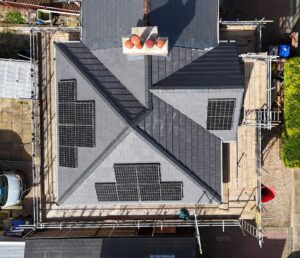New rules concerning VAT come into force this month, introduced with the aim of reducing fraud and underpayment within the building and construction sector.
From March 1, 2021, the VAT domestic reverse charge will reduce the amount of VAT charged from sub-contractors to the main contractor, and those affected by the new regulations are well advised to take expert advice on the potential consequences on cash flow.
What is the reverse charge?
If you are a main contractor, you will stop paying VAT to sub-contractors working on projects where Construction Industry Scheme (CIS) applies.
If you are a sub-contractor, you will no longer charge VAT to your contractor when working on projects where CIS applies.
Who does it affect?
If you are either a main contractor or a sub-contractor, the VAT reverse charge will affect you if the following applies:
You work on any contract covered by CIS
Both you and your main contractor or sub-contractor are VAT registered businesses.
The truth is, unfortunately, that the building and construction sector has a reputation of having a fair few rogue traders who sometimes charge VAT but then fail to make the payments further down the line. HMRC has recognised that there is a significant black hole between the amount of VAT being charged and the amount that is being declared to the Treasury and has introduced new rules to try to plug the gap.
Hopefully, this will lead to an improved system where the tax that is due is paid and the reporting mechanisms mean more money flowing into HMRC’s coffers, but what we see as a potential consequence of this is that sub-contractors will have to make allowances within their cash-flow management as they will now be paid less up front.
In the past, they had the benefit of being able to use the gross amount paid on the invoice, including the VAT, until it was time to make the payments. From this month, they will find that they are invoicing for less, and so they will have less cash coming into the business.
What businesses need to do
If the situation applies to your business you will need to ask your contractor or sub-contractor about their CIS, end-user or VAT status.
Make sure that your accounting systems, or those who operate your accounting systems are prepared for the changes.
Working with your tax adviser, you’ll need to firstly ensure that you’re adhering to the new guidelines and that all parties are aware of the new system. After that, it would be advisable to look again at your cash-flow and how it will be affected. Smaller sub-contractors often rely on the positive cash-flow that charging VAT brings and it’s in everyone’s interest to ensure that within the supply chain it is worth making sure that all parties have systems in place to minimise disruption as far as possible.
One option may be for a change of VAT reporting to a monthly basis, rather than the traditional quarterly returns.
The team at J Sweeney Accountants will, of course, be happy to offer with any advice or assistance in getting to grips with the new legislation.
Contact J Sweeney Accountants on 01604 950034 or email info@jsweeneyaccountants.co.uk













